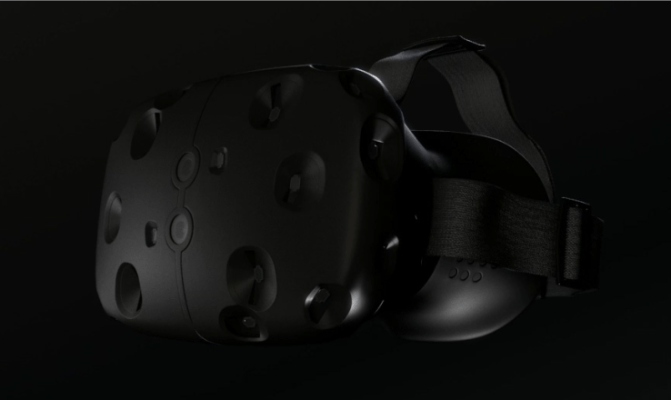You wait years and years for virtual reality to become a thing, and then suddenly a truck load of VR headsets pile into the tech hype cycle almost at once (thanks Oculus). But if you’re a consumer wanting to get eyes into this next-gen VR hardware you’re likely still waiting to live the daydream.
And it appears that continued patience is your best bet. The forthcoming Vive VR gaming-focused headset, which was announced in Q1 this year — a joint venture between phone maker HTC and gaming brand Valve — with a slated release date of later this year, now looks like it won’t be shipping in any quantity till 2016.
In a press statement yesterday HTC said that only a “limited quantity” of Vive headsets will be offered to consumers this year — with “larger quantities shipping in calendar Q1 2016.” So the Vive now has the same consumer release date as Facebook’s Oculus Rift.
There’s no word on how limited exactly Vive’s availability will be this year but HTC is clearly managing expectations. None of this is surprising, given that the Vive developer headset only started shipping this June — vs HTC originally saying they would be available this spring. (Meanwhile Oculus has been shipping dev kits for donkey’s years, in tech terms, but that hardware did start life as a crowdfunding project and has evolved considerably since 2013.)
HTC also continues to be forced to wrangle with corporate changes and business strategy shifts as it tries to revive the fortunes of its core smartphone business. While gaming firm Valve is somewhat famous for lengthy development delays (just ask a Half-Life fan) — thanks to its less than corporate management structure (as the entry on its Wikipedia page about ‘Valve time’ notes).
What’s clear is the HTC-Valve pairing has some (very real) development mountains to overcome if it’s to deliver consumers the virtual reality experience that so wowed my TC colleague, John Biggs, at a tech demo back in February.
It’s worth noting that that experience was tightly controlled, with limited press access and a VR set up that involved prepping an entire room in advance — not just the headset. The position of the Vive headset in that demo was ascertained via pulsing laser lights distributed around the room. While processing was done via a powerful gaming PC.
Bottom line: It’s one thing to deliver an impressive tech demo in a controlled environment. It’s quite another to ship a robust product to all and sundry.
Add to that, when you’re promising to disrupt reality — to literally suspend users’ disbelief with a virtual technology that so perfectly plays the human eye and brain that biology genuinely can’t distinguish a difference — well, consumer electronics’ challenges rarely get any steeper than that.
The slightest latency or discrepancy and your fancy VR product will be pitching people into the type of reality-distorting nausea they’re unlikely to forget for a very long time.
So patience, here in the undulating foothills of VR, really does resemble virtue.
